Introduction
In the realm of traditional Chinese cuisine, few concoctions evoke as much nostalgia and debate as Rock Sugar Pear (冰糖雪梨). This humble dish, born from the marriage of succulent pears and crystalline rock sugar, has transcended generations as a remedy for coughs, a refresher in summer, and a comforting embrace in winter. Yet, beneath its simplistic charm lies a question that sparks lively discussions: Is Rock Sugar Pear a beverage to be sipped, or a dessert to be savored? This article delves into the cultural, culinary, and contextual layers of this iconic dish, exploring how its dual nature as both liquid and solid reflects broader themes of tradition, health, and sensory pleasure.
The Origins of Rock Sugar Pear: A Tale of Healing and Harmony
To understand the essence of Rock Sugar Pear, one must first trace its roots to ancient Chinese medicinal practices. For centuries, pears (Pyrus spp.) have been revered in traditional Chinese medicine (TCM) for their ability to moisten the lungs, alleviate thirst, and soothe sore throats. The Compendium of Materia Medica (Bencao Gangmu), a 16th-century pharmacopeia, extols the pear’s “cooling” properties, which balance internal “heat” believed to cause ailments like dry coughs and constipation.
Rock sugar (bingtang), or crystallized sucrose, entered the equation as a natural sweetener and preservative. Unlike refined sugar, rock sugar is prized in TCM for its “gentler” energy, believed to harmonize the pear’s cooling effects without overwhelming the spleen—a vital organ in TCM philosophy. Together, pears and rock sugar form a synergistic duo: the fruit’s juicy flesh provides hydration and fiber, while the sugar enhances flavor and acts as a mild expectorant.
Ingredients and Preparation: The Alchemy of Simplicity
The beauty of Rock Sugar Pear lies in its minimalist composition. At its core, the recipe requires three ingredients:
- Pears: Typically, Ya pears (鸭梨) or Snow pears (雪梨) are favored for their crisp texture and subtle floral sweetness. These varieties, native to northern China, have thin skins and high water content, making them ideal for stewing.
- Rock Sugar: Large, translucent crystals of sucrose, often sourced from sugarcane or beet.
- Water: The unsung hero that transforms solids into a fragrant elixir.
Modern variations may incorporate herbs like chrysanthemum (Juhua), goji berries (Gouqi), or ginger, but the classic recipe remains unadorned.
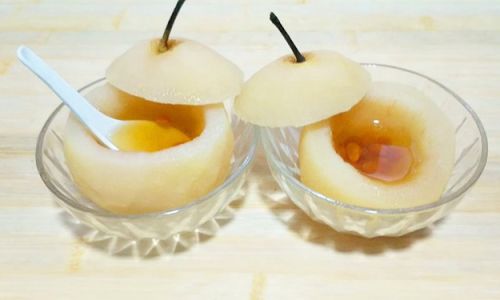
The Cooking Process: A Dance of Fire and Time
Preparation begins by peeling the pear (though some leave the skin intact for added fiber), coring it, and sometimes halving or quartering the fruit. The pear is then submerged in a pot with water and rock sugar, brought to a gentle simmer, and left to stew until the pear turns translucent and the liquid thickens into a syrup.
Critically, the cooking time dictates the dish’s final form. A brief simmer yields crisp pear chunks suspended in a thin broth, while prolonged stewing reduces the liquid to a viscous nectar, softening the pear to a melt-in-the-mouth texture. This variability invites the central question: Does the act of consuming Rock Sugar Pear prioritize the pear’s flesh or the amber liquid?
Cultural Significance: From Apothecary to Everyday Delight
Rock Sugar Pear’s journey from medicinal tonic to ubiquitous dessert mirrors China’s evolving relationship with food and health. Historically, it was reserved for the ailing or the elderly, served in ceramic bowls as a gesture of care. Today, it occupies a more democratic space—sold in cans at supermarkets, served in cups at night markets, and brewed in home kitchens as a weekend treat.
In northern China, where winters are harsh, Rock Sugar Pear is a staple during the Lunar New Year, symbolizing purity and prosperity. In the south, it’s a summertime refresher, chilled and garnished with mint. This adaptability underscores its role as a cultural chameleon, equally at home in a sickroom or a street food stall.
The Great Debate: Sip or Savor?
The crux of the Rock Sugar Pear dilemma lies in its dual identity. On one hand, the liquid—golden, viscous, and fragrant—invites sipping. It coats the throat, soothes parched lips, and delivers a subtle sweetness that lingers like a memory. On the other, the pear itself, now imbued with the syrup’s essence, offers a tender contrast. Its flesh, once firm, becomes a vehicle for the liquid’s flavor, yet retains enough texture to demand chewing.
Arguments for Sipping
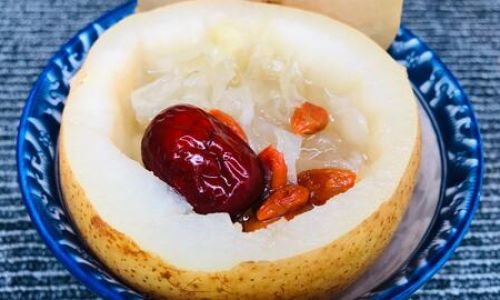
- Hydration and Immediacy: The liquid is absorbed faster by the body, making it ideal for quenching thirst or delivering quick relief to a sore throat.
- Convenience: In its canned form, Rock Sugar Pear is often marketed as a “drink,” with straws provided to sip the syrup while discarding the pear.
- Culinary Tradition: Some chefs argue that the stewing process extracts the pear’s essence into the liquid, rendering the fruit itself a byproduct.
Arguments for Savoring
- Nutritional Value: The pear retains dietary fiber, vitamins (notably C and K), and antioxidants, which are partially lost in the liquid.
- Textural Pleasure: The pear’s transformation from crisp to tender adds a dynamic element missing in pure liquids.
- Waste Reduction: Discarding the pear feels wasteful, especially given modern eco-conscious values.
Regional and Generational Divides
Geography and age further fuel the debate. Older generations, raised in an era of scarcity, often view the pear as the “main event”—a rare treat to be relished. Younger urbanites, accustomed to convenience, may prioritize the liquid as a quick, on-the-go snack.
Similarly, northerners, who stew pears for longer periods, tend to favor the syrup’s intensity, while southerners, with a penchant for freshness, may lean toward crisper pears and lighter broths.
Health Perspectives: Balancing Act Between Sugar and Nourishment
Nutritionists weigh in with nuanced perspectives. While the pear’s fiber aids digestion and the liquid hydrates, the dish’s sugar content raises concerns. A typical serving (200ml) contains 15–20 grams of sugar—equivalent to a candy bar. Diabetics and health-conscious consumers thus face a dilemma: enjoy the pear’s fiber while limiting the syrup, or sip sparingly.
TCM practitioners, however, maintain that the sugar’s role is therapeutic, not indulgent. “Rock sugar guides the pear’s properties to the lungs,” explains herbalist Li Wei. “To discard it is to miss the medicine.”
Culinary Innovations: Blurring the Lines
In recent years, chefs and food entrepreneurs have reimagined Rock Sugar Pear, merging tradition with modernity:
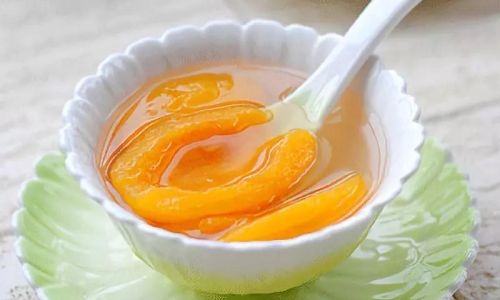
- Pear Jelly: Agar-agar or gelatin transforms the syrup into wobbly cubes, served with pear chunks.
- Pear Smoothies: Blended with yogurt or almond milk for a creamy twist.
- Pear Popsicles: Frozen syrup with pear slices, a hit in summer.
- Gourmet Desserts: Rock Sugar Pear tartlets, pear-infused sorbets, or syrup-glazed cakes.
These iterations challenge the sip-or-savor binary, offering hybrid experiences that cater to both palates.
The Global Stage: Rock Sugar Pear Beyond Borders
As Chinese cuisine gains global traction, Rock Sugar Pear has emerged as an ambassador of subtle sweetness. In New York’s Chinatown, dim sum restaurants serve it warm in teacups; in London, hipster cafés repurpose it as a “detox elixir.” Yet, adaptation often comes at a cost. Some Westernized versions omit the pear entirely, reducing the dish to a sugary drink—a move purists decry as cultural dilution.
Conclusion: A Dish of Many Faces
In the end, Rock Sugar Pear defies easy categorization. It is a drink to the thirsty, a dessert to the hungry, a medicine to the ailing, and a cultural artifact to the curious. Its beauty lies in this multiplicity—a testament to the Chinese culinary philosophy that food and drink are not mutually exclusive, but two sides of the same coin.
So, the next time you encounter a bowl of Rock Sugar Pear, pause to savor the ambiguity. Sip the syrup, savor the pear, and let the debate linger like the aftertaste of rock sugar. After all, in the world of gastronomy, some questions are best left unanswered—or at least, half-chewed.
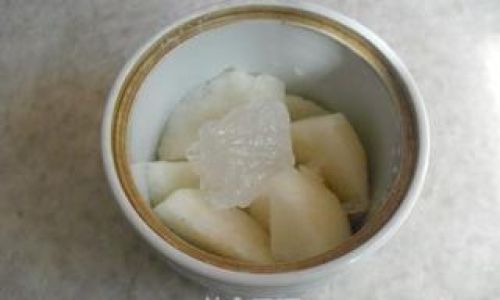
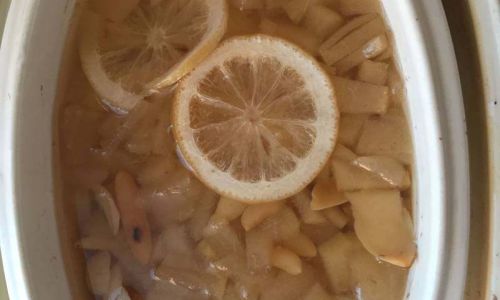
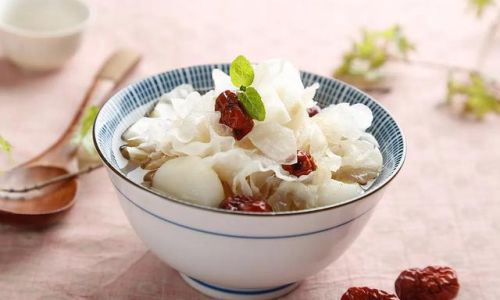
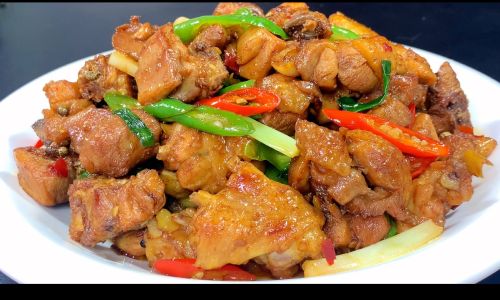
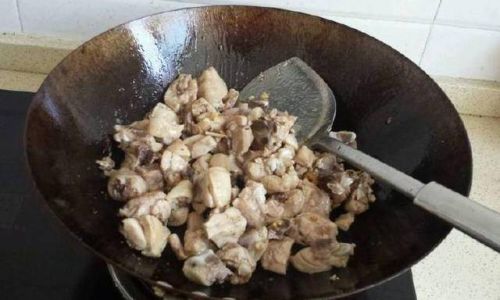
0 comments